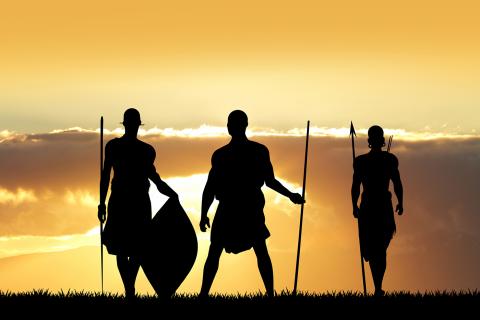Marking the transition from childhood to adulthood, coming-of-age ceremonies have served as significant rites of passage for thousands of years. These rituals—as elaborate, demanding or relatable as they may be—reflect the values and beliefs of the societies that practice them. Timeless themes of identity, responsibility and belonging resonate through these transformative experiences. Join us as we delve into 10 diverse expressions of coming-of-age throughout history and discover how these traditions continue to shape our understanding of adulthood today.
#1. Maasai Lion Hunt as a Passage to Manhood
A group of warriors stands tall on the grassy savanna of Maasailand. Armed with nothing more than spears and shields, they prepare to face their formidable opponent: the lion. The night before, senior warriors planned in secret, and as the morning sun rose, both senior and junior warriors slipped away quietly, without waking elders or women. But not all would participate; some junior warriors, determined to prove themselves, reluctantly returned home or fought a losing battle with comrades to stay.
As the hours pass, the group spots their foe. They ring bells to draw the lion out of the brush, to irritate it, to provoke a fight. The lion emerges, snarling, and begins to run. The warriors rapidly pursue, and with a swift throw, they mortally wound it.
The people of Maasailand, located in southern Kenya and northern Tanzania, have engaged in this tradition for hundreds of years. To kill a lion marked the passage from boyhood to manhood, and to slay the beast single-handedly elevated a man to the status of a great warrior, revered throughout his life. Some warriors took to the savanna alone—the ultimate test of courage. Some perished along the way.
When the warriors returned to their village, a lamb would be sacrificed, and the lion’s tail, claws, and mane would be crafted into wearable trophies by the women as symbols of personal victory. The sacred mane was worn by the fiercest warriors during ceremonies until they reached the age of junior elder, at which point the mane would be ceremonially returned to the wilderness to honor it. Similarly, the tails were kept in the warrior camp until the end of their warriorhood, then discarded in a ceremony involving the entire group.
Today, however, the Maasai no longer hunt lions. Instead, they pay homage to their old ways, throwing spears in Olympic-style ceremonies. Still, their knowledge and resourcefulness in the hunt remain valuable. Many of these warriors now work with conservationists, using their skills to track, tag, and monitor the local lion population.
Read the full article: "10 Captivating Coming-of-Age Traditions from Around the World" in our November–December 2024 issue, Coming of Age in the Ancient World. Subscribe to Ancient Origins Magazine today!
Featured Image: Representative image of Maasai lion hunt. adrenalinapura / Adobe Stock




